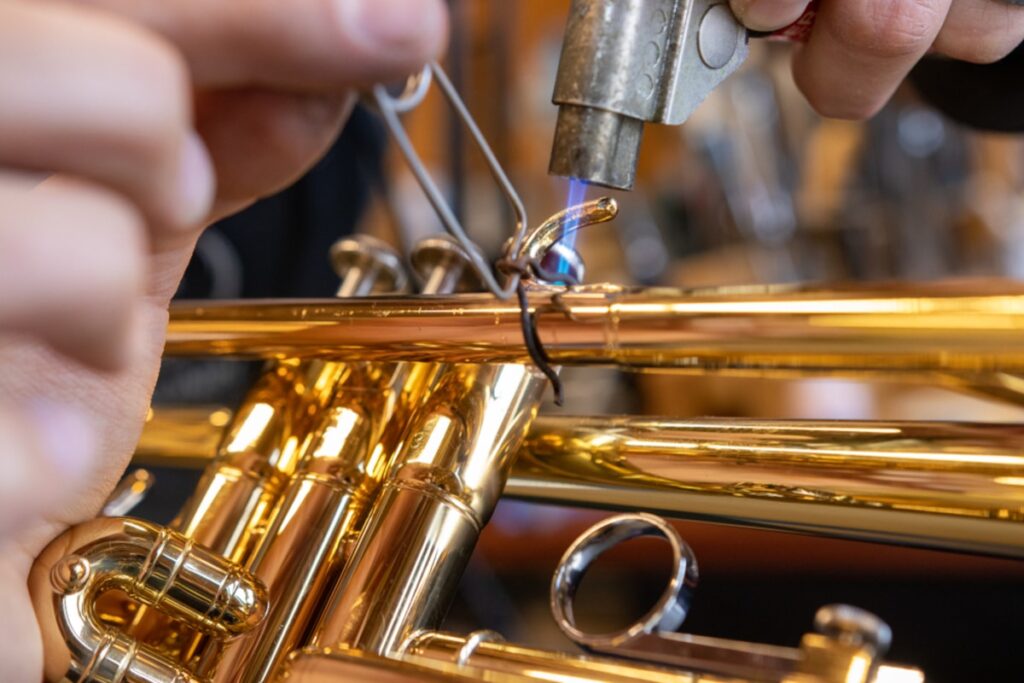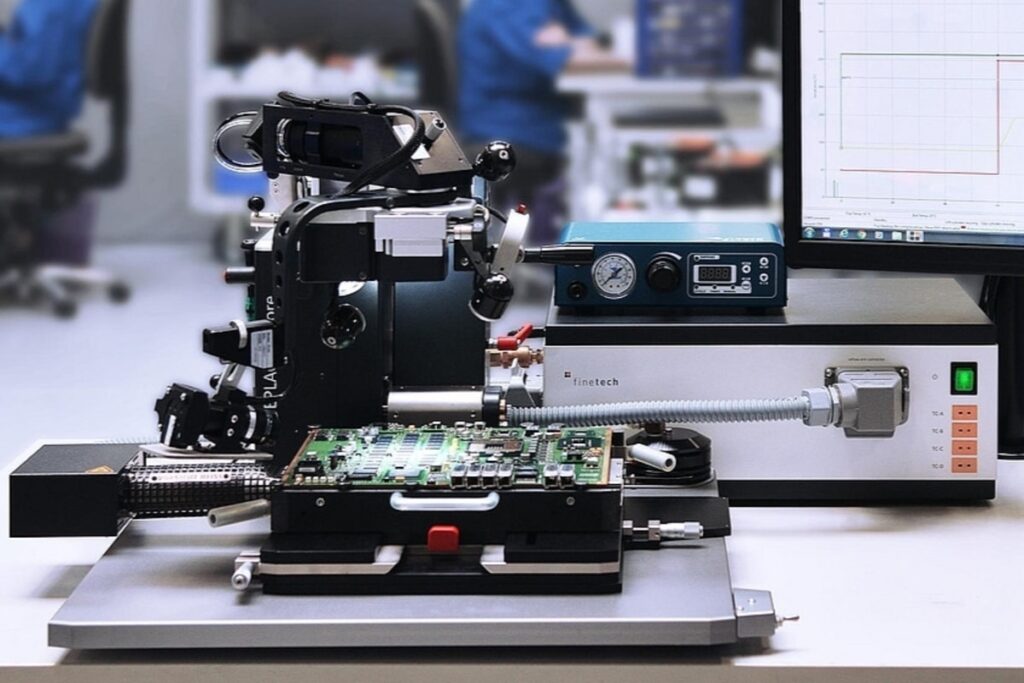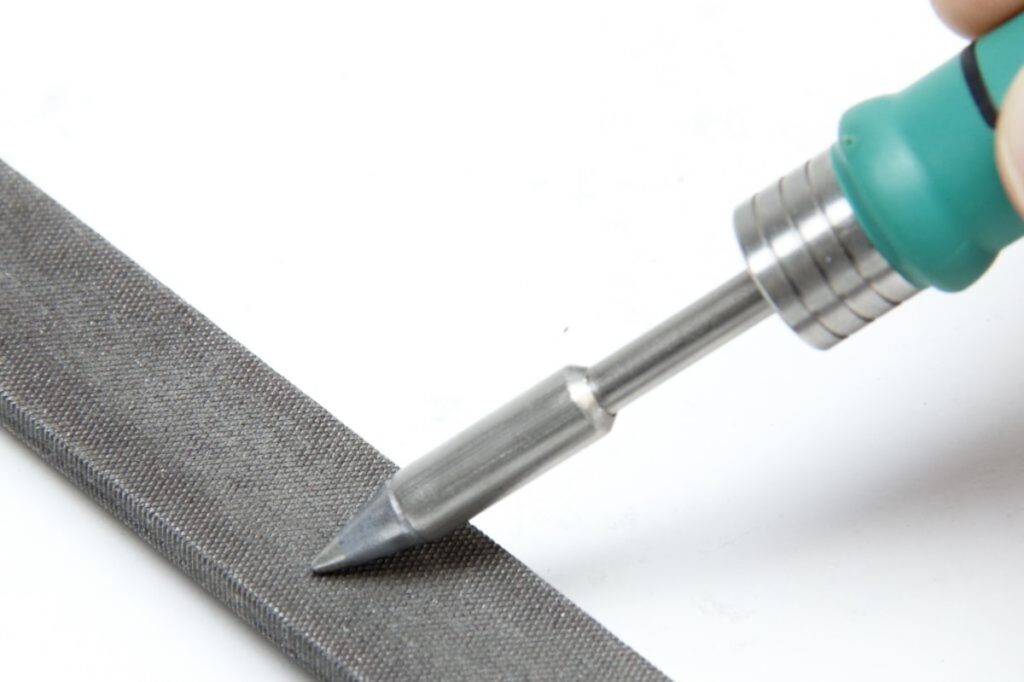Solder has a reputation as an ugly black goo that you have to use sparingly. But it doesn’t need to be this way! It’s all about knowing how to solder well so you can achieve beautiful results with minimal effort.

Can you solder brass effectively? Soldering brass properly is doable. However, ensure that the task’s surfaces are spotless and securely fitted together. Additionally, utilize a low-heat flame torch and the appropriate brass solder.
In this article, we’ll show you everything you need to know about how to solder brass effectively. We’ve also included some tips on what not to do when working with brass. And we won’t even mention gold-plating!
Let’s kick off by getting the right tools and materials.
1. Get the Right Tools
You don’t need expensive equipment or special training in order to solder brass successfully. All you really need is a heat source (usually a gas flame) and enough room to move around while doing it. Most people already own these items, but if they’re missing from your toolkit, then make them part of your routine—they will help you get better at soldering. Here are our top recommendations.
A Hot Plate
A hot plate is essential because, without one, there would be no way to hold the workpiece above the molten metal. The best ones are made by Thermacell. They come complete with stands, grilles, thermocouples, and more.
An Iron
Iron is another must-have item for successful soldering. There are two different types: One type uses tungsten carbide bits, which gradually wear down over time and require replacement. These irons cost less than $100, though you may want to spend slightly more depending on their quality. You should avoid using any kind of “stubby” iron since they tend to tip over easily.
The other type of iron does not use replaceable bits, but costs significantly more. The benefit here is that its heating elements last forever and never burn out. However, they are much heavier and take longer to warm up. This makes them unsuitable for quickly resoldering circuit boards after cleaning them with solvents like acetone.
Soldering Station
There are pros and cons to each style, but whichever one you choose is irrelevant. Just buy the highest quality one you can afford. For most hobbyists, the cheaper option, Weller WLC100 40-Watt Soldering Station, works just fine. If you decide to purchase a high-end model, consider buying something like the X-Tronic 3020-XTS 75-Watt Soldering Iron Station Kit. Its features include adjustable temperature control settings and automatic shutoff once the desired temperature is achieved.
If you prefer to learn about specific models before making purchases, check out our guide for a list of great beginner soldering stations. Finally, you might want to try some inexpensive alternatives, such as a stovetop burner or a microwave oven.
2. Get the Right Materials
As mentioned earlier, you only need basic household supplies to solder brass. To keep things simple, let’s assume you have access to a kitchen range hood, which serves two functions: providing radiant heat to melt the solder faster and keeping fumes away from you. Other common ingredients found in many kitchen cupboards include:
Here are some recommended brands of products and accessories that make life easier during soldering projects. Remember that you can find similar items online for far less money, but nothing beats having them in stock at home:
Brass Flux, Cleaners, and Conditioners
There are several good options available, including Romeda Solder Flux Jars, Thermaltronics Rosin Flux Paste, and Wright’s Copper and Brass Polish and Cleaner Cream. Don’t use anything acidic, abrasive, or corrosive. Also, steer clear of harsh chemicals like ammonia. Instead, opt for mild cleaners like Mr. Metal Polish.
Alligator Clips
When dealing with sensitive electronics, it’s important to isolate components with electrical clamps instead of screws. This prevents short circuits caused by loose connections. Look for heavy-duty versions that feature spring action.
Copper Wire Gauges
Wire gauge sizes vary based on whether you plan to use stranded or solid copper wires. Stranded wiring requires greater precision and care because of its thin diameter. Solid copper wires are thicker, so they conduct electricity better. Gauge numbers indicate the thickness of the wire itself, rather than its length. Pick a size suitable for the longest component needed.
Electrodes
Electrode holders allow you to attach positive (+ve) leads to terminals while simultaneously protecting delicate pins against accidental damage. Consider getting both flat-tipped and pointed electrodes. Flat-tipped ones are safer to handle and provide better coverage. Pointed ends are ideal for piercing holes through thick pieces of material.
Pliers
Plier jaws offer maximum gripping power for holding small parts securely. Purchase pairs designed specifically for removing insulation from cables.
Rubber Bands
Small rubber bands serve multiple purposes. First, they act as water bottles attached to the side rails of stoves. Second, they create space between layers of tinned electronic components in case of someone bumps into the setup.
Third, they prevent liquid spills from damaging unprotected components. Fourth, they compress excess solder onto the joints for increased strength.
Strips of Flexible Foam Tape
Flexible foam tape is used to fill gaps created when attaching leadless solder beads to circuit board pads. Their softness allows the beads to flow freely, creating intimate contact with the surface underneath. Assemble components in rows, alternating stripes of tape with empty spaces where the next row of components will land.
Then insert the entire assembly into a container filled with potting compound. Apply additional pressure until the whole thing becomes fully saturated. Let it dry overnight. Once cured, peel off all traces of adhesive and trim edges.
Tools for Inspecting the Finished Product
Inspecting completed projects often provide valuable feedback for improving future efforts. Therefore, we recommend taking pictures and videos whenever possible. A digital or smartphone camera comes in handy for this purpose.
You can use these gadgets to share photos of your project online. Once you identify problem areas, you can either fix them yourself or ask a professional for help.
Now that you’ve got everything you need, you’re ready to start soldering!
3. Inspect the Brass
Always ensure proper ventilation before performing any task involving brass. Wear safety glasses and gloves while handling the metal. Next, inspect the area where the components will eventually sit. Is there debris present? Are there rust spots or cracks? If yes, remove them immediately so that none of the dirt gets transferred onto the newly cleaned surfaces. Keep the area free of dust and hair too.
4. Clean the Brass
After removing unwanted objects, wipe down the area thoroughly. Pay extra attention to corners and crevices. Be careful not to scratch the brass. Wipe again with denatured alcohol and rinse with deionized water.
Repeat this process three times. Allow the cleaned area to air dry naturally. Once dry, apply a coat of anti-corrosive primer followed by a layer of thermal spray paint. Wait 15 minutes for the latter to cure completely. Now, proceed to assemble the components according to step 4 below.
5. Set Up Your Soldering Station
Setting up your soldering station involves preparing the workspace and ensuring that it’s safe to operate. Ideally, you’d set up near a window to maximize natural light exposure. Position the table close to the firebox to reduce cooking odors. Place the iron directly under the hood vent and raise it 3 inches higher than the bottom edge of the unit.
Adjust the distance between the hood and the table accordingly. Ensure that the base isn’t covered in grease splashes. Cover exposed outlets with plastic wrap to protect them from burns. Lastly, place a nonstick pan lid over the iron stand to capture dripping fat.
6. Apply Flux to Brass
Applying flux helps improve bonding by forming a protective film. Different kinds of fluxes react differently with certain metals. Fortunately, all the major brass manufacturers now produce generic varieties that perform equally well with various grades of solder. Check out this guide for choosing the right flux.
When applying flux, lightly brush it onto the brass first, covering every inch. Hold the iron vertically and move it back and forth slowly. Afterward, wait five seconds and repeat the motion twice. Do this for every joint. Avoid touching bare steel with the heated element. Doing so could result in scratches. Rinse the joints with a degreasing agent after fluxing.
7. Prepare the Solder
Most beginners tend to rush straight into melting the solder paste. That’s not advisable because it can cause bubbles to form. Instead, first, prepare the solder powder in advance.
Mix equal amounts of 63% zinc and 37% lead alloy. Pour about 0.3 ounces of the mixture into a crucible. Heat the contents gently on medium heat for 30–40 minutes. At the same time, stirring occasionally to prevent scorching. Remove it from the flame when melted and cool it to room temperature.
Next, pour the solder paste into a disposable plastic container and place it on a shelf or table. Once the solder is ready, apply the flux to all four corners of every joint. Using a small brush, gently tap off any excess flux.
Place a small amount of solder in each corner of the joint and heat them together for at least 5 seconds. You can use a longer heating time if you want to be more precise, but don’t exceed 10 seconds. Check to ensure that the temperature remains between 200 and 400 degrees Fahrenheit.
The solder paste should now be molten. While holding the iron vertically, move it back and forth at a slow speed to evenly distribute the solder in the joint. Then, wait 15-30 seconds for the joint to cool down and harden completely. If necessary, use a lighter or propane torch to re-heat the joints to melt any remaining solder paste. Repeat this process three times.
8. Start Soldering the Brass
Now that you’ve prepared the solder, start soldering the brass. Hold the iron vertically and move it back and forth to spread the solder. When done, wait 5-10 seconds, and then heat the joint again for 15-30 seconds. Repeat this process until every joint has been soldered. Make sure to keep a steady flow of solder at the tip of the iron in order to avoid wasting precious solder.
After you finish soldering all the joints, clean off any excess solder with a wire brush or sandpaper. Remove any remaining flux from the surface of the brass with a dry paper towel.
Congratulations, you’ve just finished soldering your first joint!
Tips and Tricks When Soldering Brass
There are a few things to consider when soldering brass:
Next time you need to solder, follow these instructions and you’ll have no problems. Once you’ve soldered the pieces of your board together, they’ll be a permanent part of your project. You can now proudly display it on your desk or wall!
The Bottom Line
There you have it! Soldering is a useful skill that will help you in many different aspects of your life. And, as you’ve seen, it’s not as difficult as it sounds. You can learn this skill with just a little practice and patience.
The best way to learn is to get your hands dirty and solder away!
Darell is a Certified Welding Engineer (CWEng) with over 23 years of expertise in TIG, MIG, MAG, dual flux, and stick welding. He is a senior welding engineer who has a desire to share his experience. Visit unwelded.com and join Darell as well as other welding enthusiasts in obtaining fabrication knowledge, amazing welding gadgets, and useful welding insights.

